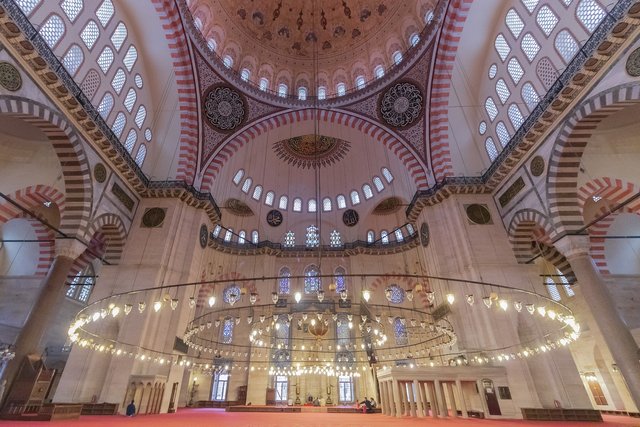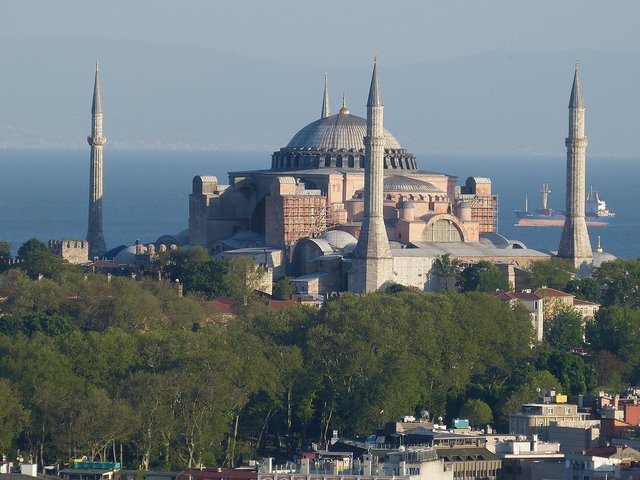History of Hagia Sophia, the Most Magnificent Mosque in the World that Was Once a Church
Hello good night to all steemian friends, how are you today? Hopefully all are still in good health and always under the protection of Allah SWT so that they can carry out all activities well.
Hagia Sophia is a prominent mosque located in Istanbul, Turkey. This mosque is famous for having a very large building and has a very stunning architectural design. The most interesting thing is that Hagia Sophia has changed its function several times. Initially, the Hagia Sophia building was first built as a church, then changed into a mosque, then converted into a museum, and now the magnificent building is a mosque.
Hagia Sophia is one of the world's great monuments built during the Byzantine era in Istanbul, Turkey. Initially, the Hagia Sophia building was founded by the Byzantine Emperor Justinian I in the 6th century AD (between 532-537 AD) as a Christian church. The repeated changes in function made the building reflect the religious changes that occurred in the region. The combination of Islamic heritage architecture in the form of towers, then luxurious mosaics from Christianity make the building look so amazing.
The location of Hagia Sophia was originally a church that was allegedly built on the orders of Constantine I in 325 AD on the foundations of a pagan temple. His son, Constantius II, consecrated it in 360 AD. However, a fire broke out in 404 AD during the riots following the second exile of St. John Chrysostom, the then patriarch of Constantinople. The church was damaged, so it was rebuilt and enlarged by the Roman Emperor Constans I and rededicated in 415 AD by Theodosius II.
In January 532 AD, the church burned down again during the Nika revolt. Justinian I built a more magnificent replacement. The current Hagia Sophia took about six years to complete and was completed in 537 AD. It suffered an earthquake that destroyed the dome in 558 AD and another partial collapse. The building was restored in 562 AD. The dome was then made smaller and the entire church was reinforced from the outside. For more than a millennium, the church was the Cathedral of the Ecumenical Patriarchate of Constantinople.
The church was looted in 1204 by the Venetians and the Crusaders during the Fourth Crusade. It was renovated again in the mid-14th century AD. In 1453 AD, Constantinople was conquered by the Turks. Mehmed II then converted the church into a mosque. Sultan Mehmed II added wooden minarets, a large chandelier, a mihrab (a niche that shows the direction of Mecca), and a pulpit to the Hagia Sophia building. Bayezid II's son built a red minaret on the southeast corner of the building and a slender white minaret on the northeast side of the mosque.
The two identical minarets on the west side were most likely commissioned by Selim II or Murad III and built by the famous Ottoman architect Sinan in the 1500s. In 1934, then-President Kemal Atatürk turned the building into a museum. Hagia Sophia was designated a UNESCO World Heritage site that includes other major historical buildings and sites in Istanbul in 1985. Current Turkish President Recep Tayyip Erdoğan made the controversial decision in 2020 to convert Hagia Sophia back into a mosque, where it remains today.
Regards,
@fadlymatch


